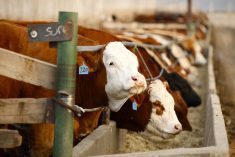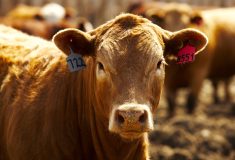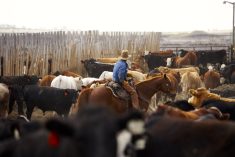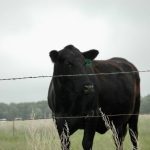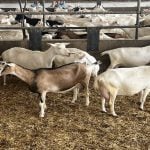Fed cattle
Feedlot margins are positive while packer margins have started to struggle. As packers push back, carcass weights have grown, supplies have increased slightly and beef demand dipped lower during the extreme summer heat. All this has contributed to a seasonal reduction in fed cattle prices.. From the June price high of $247.84/cwt, prices gradually declined, then stabilized in August. Early August saw prices at $234.80/cwt and the second week dipped to $234.64/cwt, which is 32 per cent or $52.23/cwt higher than the same week in 2022.
Although fed prices are still strong and feeder margins positive, the fed cattle cash basis widened to levels unseen in August for over 30 years. The second week of August saw a cash-to-cash basis of -$17.44/cwt, which compares to -$7.52/cwt the same week in 2022 and -$3.82/cwt in 2021.
Read Also
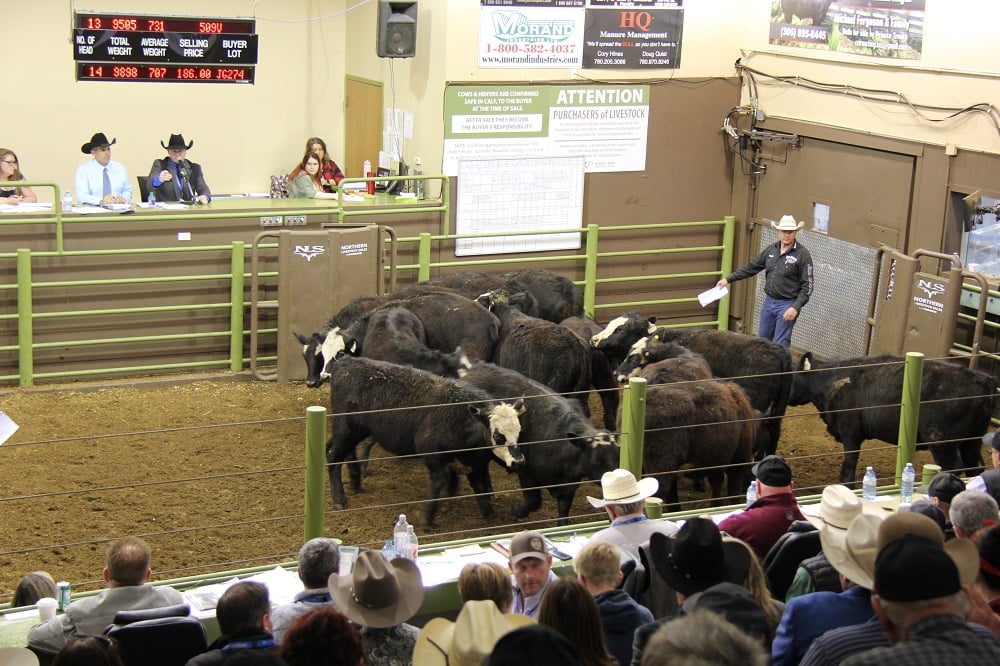
Cattle Market Summary
Break-evens, cow and calf prices, plus market summaries courtesy of Canfax and Beef Farmers of Ontario. Cost of Production October…
Canfax’s recent cattle-on-feed report confirms that on-feed numbers remain small and widespread drought is forcing cattle off pastures and on feed earlier than normal. Although marketings were down just one per cent, the total number of cattle marketed by feedlots with over 1,000 head finishing capacity was the lowest seen in July in over five years. The total number of cattle reported on feed on August 1 was 847,960 head, down five per cent from last year. The number of cattle placed on feed in July was up 56 per cent, with the largest jump in feeders over 800 lbs. as yearlings were pulled off grass early.
Total slaughter numbers in Canada are below year-ago levels. Fed steer slaughter to the end of July was down seven per cent at 927,143 head. Fed heifer kill was also down seven per cent at 575,099 head. Fed cattle exports, including cows, up to the third week in July were eight per cent fewer than a year ago at 258,811 head.
Deb’s outlook on fed cattle: Longer lift times will lead to seasonal increases in carcass weights, unfavourable to near-term fed prices which are normal as we head toward the end of the third quarter. The summer decline in the fed market has only been five per cent as of mid-August. This indicates potential further downside compared to other years. However, tighter overall supplies heading into fall, a wider than normal August basis level and optimism for fall demand should limit further downside. In the fourth quarter, front- end supplies will tighten, demand for middle meat cuts will improve and prices will recover.
Feeder cattle
The yearling run is well underway across the Prairies as pastures deteriorate. The 850-lb. feeder steers hit a $315.10/cwt high the first week of August. By the second week, it had dropped to $306.50/cwt, still $86.75/cwt stronger than one year ago. The 850-lb. cash-to-futures basis remained wide at -$26.10/cwt, compared to a five-year average of $3.01/cwt during the same week.
Spotty moisture has been no match for extreme heat this summer. Many producers are running out of pastures and will move calves early. Some sales are reporting increased summer volumes and summer internet sale volumes are larger than in recent years. Calf prices remain strong even as expectations for locally sourced feed grains may be troublesome. Cost of gain is being managed through salvaged crop for forages as well as increased corn imports.
Feeder calf prices dipped slightly from the first to second week of August. While still strong at $365.35/cwt, the 550-lb. steers lost $13.50/cwt in just one week from the summer high. At $365.25/cwt, the 500-lb. steer average was still $126.58/cwt higher than the same week in 2022. The 650-lb. weight category has been holding up and improving as buyers look for fed cattle to finish through the start of 2024. The 650-lb. steer average the second week of August was a record high of $342.38/cwt, up 45 per cent from last year. Feed costs usually dictate the spread between steer and heifer calves. In mid-August, 550-lb. heifer calves were trading $51.25/cwt back from the same weight class of steers. Last year saw a spread of $25/cwt and in 2021 it was $31/cwt.
Feeder cattle exports through the first seven months of 2023 are down 36 per cent at 92,365 head.
Deb’s outlook on feeder cattle: Drought conditions are generally negative for the fall calf market as cost of gain is the second-largest input for buyers. However, tighter feeder cattle supplies, positive fed cattle margins, good demand, imported feed and optimism spurred on by a strong technical market are expected to support a strong feeder market through the 2023 fall run. Calf prices will come under normal seasonal pressure as volumes increase, but price levels will remain higher than previous years. Given no outside extreme factors in the coming months, expect record prices through the fall.
Non-fed cattle
Cow marketings have been large through the summer due to drought. These forced sales have been met with strong non-fed cattle prices. At an average of $147.50/cwt the second week of August, D2 cows had slid $9.50/cwt from the May high but remained $33.72/cwt stronger than a year ago, and over $54/cwt higher than the five-year average for the same week. Drought-forced sales contributed to a five per cent increase in domestic cow slaughter numbers. The start of August saw a cumulative total of 288,852 head.
The average slaughter bull price was $157.63/cwt, compared to $130.17/cwt one year ago. Slaughter bull exports to the U.S. are down 18 per cent to 17,794 head while domestic slaughter increased 27 per cent to 10,791 head.
Deb’s outlook on non-fed cattle: Total cattle numbers in Canada have dropped, but poor fall pasture conditions and winter forage shortages will boost cull cow numbers this fall. Recent pressure in the non-fed market indicates packers are comfortable with current inventory which may increase as volumes increase. Expect increased volumes and dropping prices as the fall run starts. However, as families return to autumn schedules, grinding and trim demand pick up again, and given the anticipated smaller fed supply, we should see improvement as we move through the fourth quarter.





